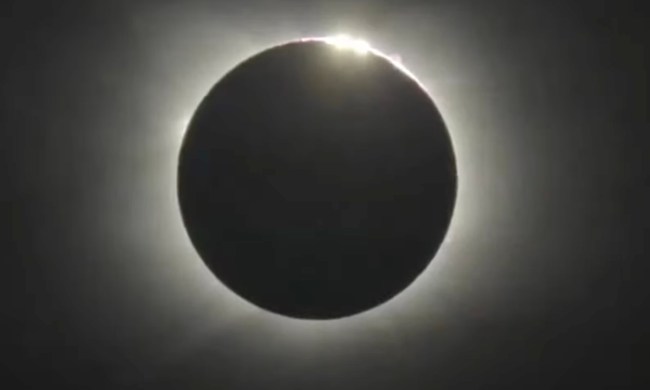The last solar eclipse to pass over the U.S. caused quite a stir in 2017. Millions of people drove many miles to find a viewing spot inside the path of totality, joining millions more already living in the 70-mile-wide path that stretched from coast to coast.
On Tuesday, July 2, another solar eclipse will take place, but this time the path of totality is further south. A lot further south. Like, in Argentina and Chile.
But that doesn’t mean you can’t watch it.
Thanks to the wonders of modern technology, you’ll be able to live-stream the stunning celestial happening on your smartphone or PC, with the footage coming from telescopes in Vicuña, Chile.
The video link, which comes courtesy of a joint effort between NASA and the Exploratorium science museum in San Francisco, will fire up at 3 p.m. E.T., with additional streams offering commentary in both English and Spanish starting at 4 p.m. E.T..
The European Southern Observatory will also show its own live-stream of the eclipse shot from its facility in the Atacama Desert in Chile.
Total solar eclipse
A total solar eclipse occurs when the moon comes between Earth and the sun, completely blocking out sunlight for several minutes. Those who’ve experienced the event from the path of totality describe the sensation as everything from eerie to inspirational. Whatever your personal take, most people agree that it’s pretty darn special.
Watching it online won’t quite be the same, of course, but it’ll still be spectacular.
“Studying the sun during total solar eclipses helps scientists understand the source and behavior of solar radiation that drives space weather near Earth, which can affect the health of astronauts in space and the durability of materials used to build spacecraft,” NASA said in a message on its website. It added that data gathered from such events can help the space agency in its mission to return astronauts to the moon in 2024, and for eventual crewed missions to Mars.
In the area?
If you happen to find yourself in Argentina or Chile on Tuesday and hope to catch the eclipse, make sure you’re watching it through certified safety glasses. Photographers, too, should be careful — check out our piece on how to get amazing eclipse shots without ruining your camera.
For solar eclipse fans in the U.S., the next one visible from American soil will be on April 8, 2024, with the path of totality running between southern Texas and northern New England.


